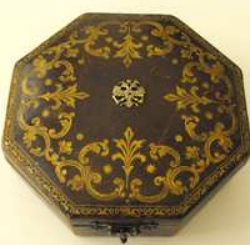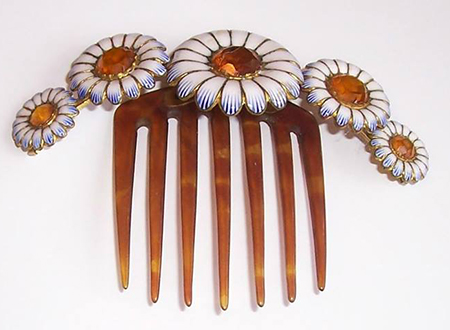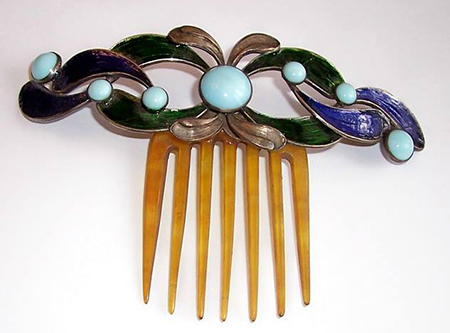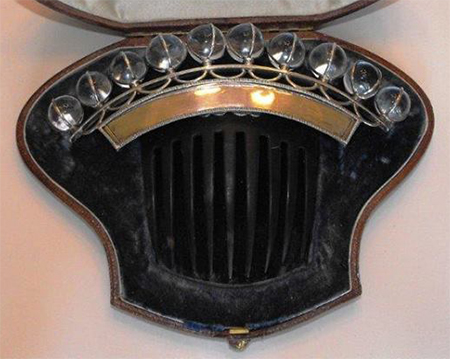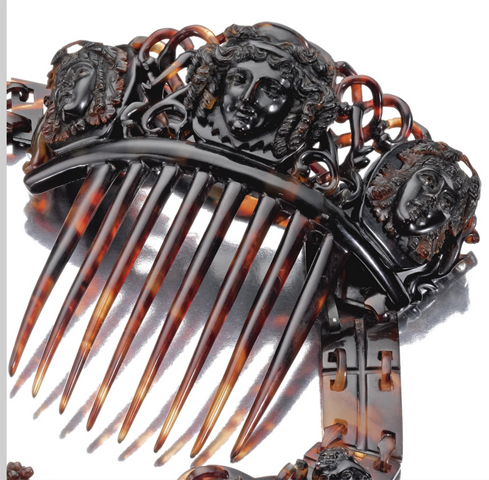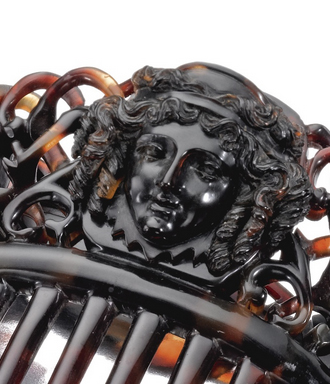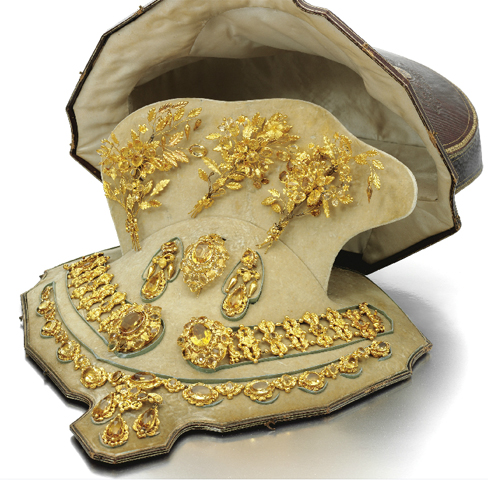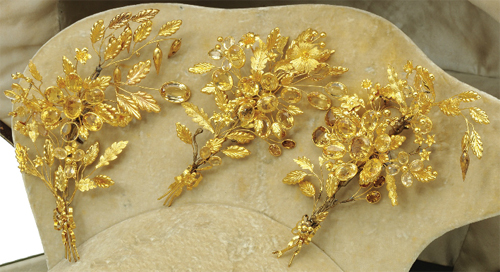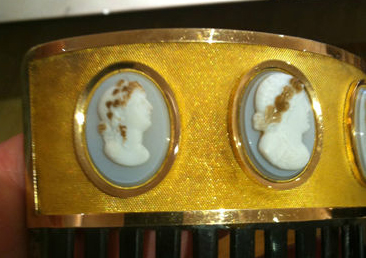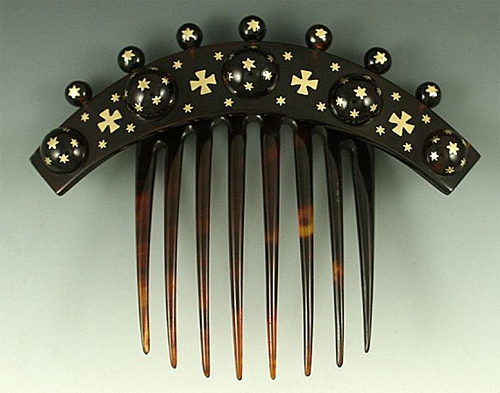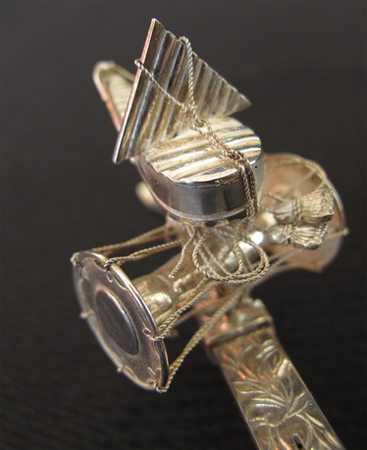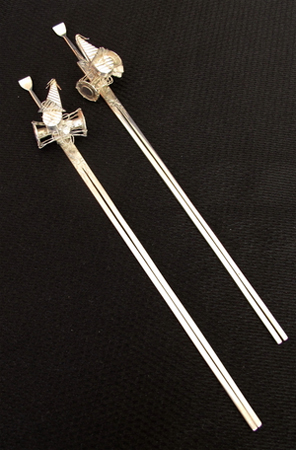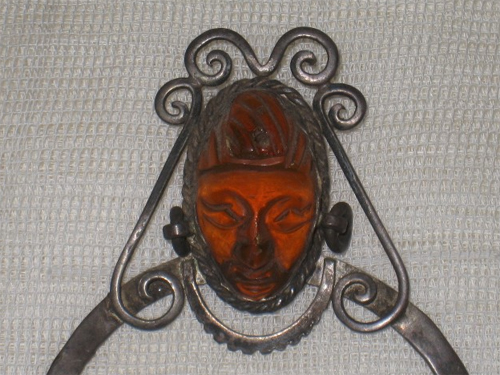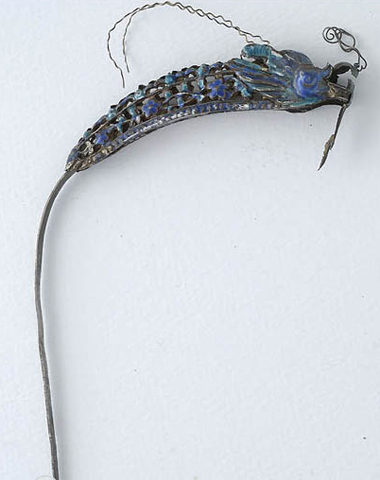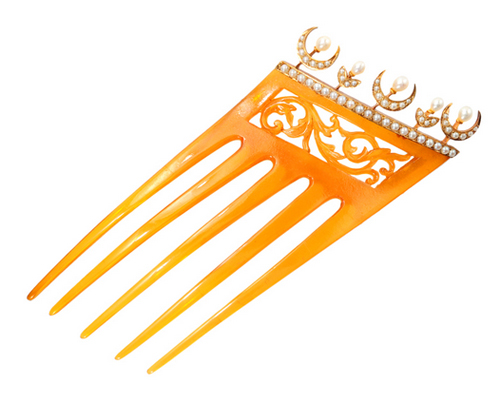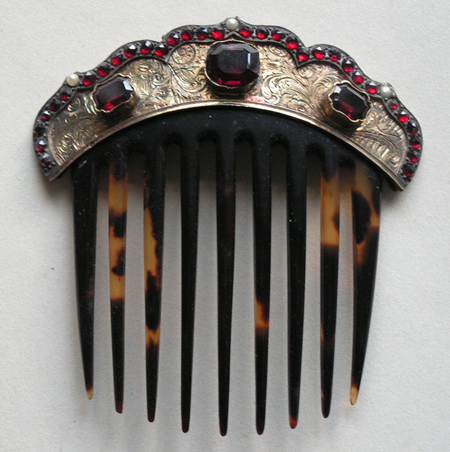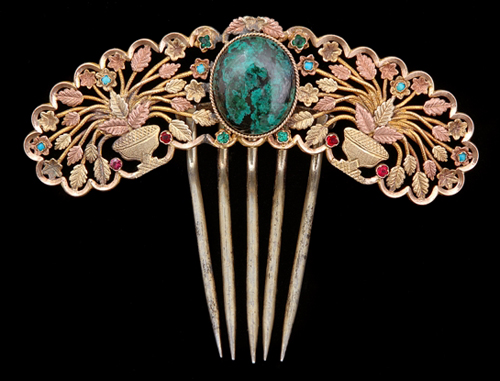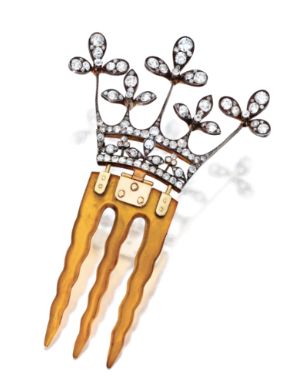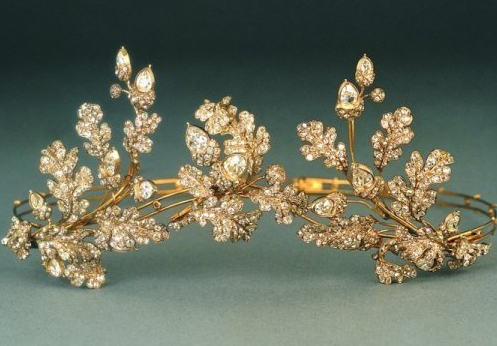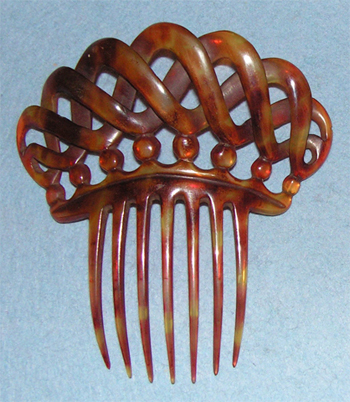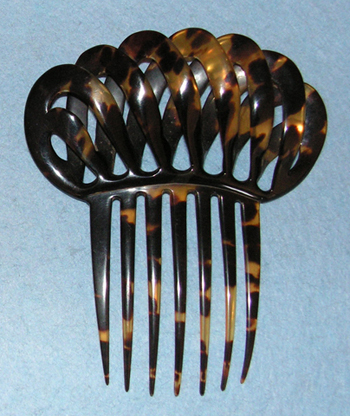Whether the hairstyle was divided into three or more parts, some short, others long; or, the hair was complexly braided at the back, Victorian women adorned their chignons with tortoiseshell combs and pins.
On top of the pins were fantastic gold creations of griffins with ruby eyes, silver so delicately woven it looked like lace, and diamonds. Sometimes the tortoiseshell was carved into flowers and intricate designs, allowing the different colors of the natural material to shade the art like a painter would use his or her brush. Other times, they were capped with gold and silver crowns.
This pin hails from the Metropolitan Museum of Art. Two carved gold rings on top of a cap are set with diamonds, a sapphire and a ruby.

Carved gold tops decorate the cross shape of this dark tortoiseshell hair pin

Just as silver is delicately woven into lace with diamond dots in this hair pin,

so The Creative Museum‘s hair pin has a circular foliage-like silver design.

More complex caps could set off jewels, such as in this hair pin with aquamarines

and these griffins with ruby eyes.

Or, the setting could be invisible to set off a delicate spray of pearls.

Any way you look at them, jeweled Victorian tortoiseshell hair pins were made in an astonishing array of variations.
कंघी
If you would like to buy an antique Victorian hair pin, I am confident in recommending these active E-Bay listings:
कंघी
For more scholarly research, please see our Resource Library and these books:
 Jewellery in the Age of Queen Victoria |
 The Comb: Its History and Development |
 Pre-Raphaelites: Victorian Art and Design |


